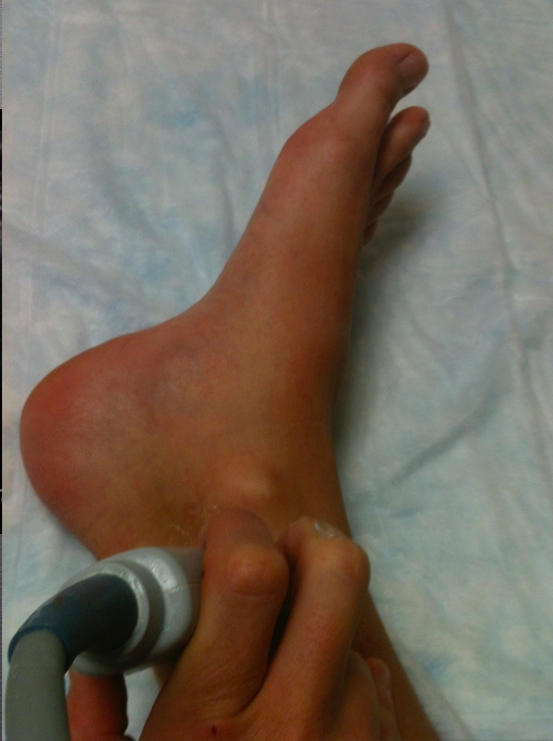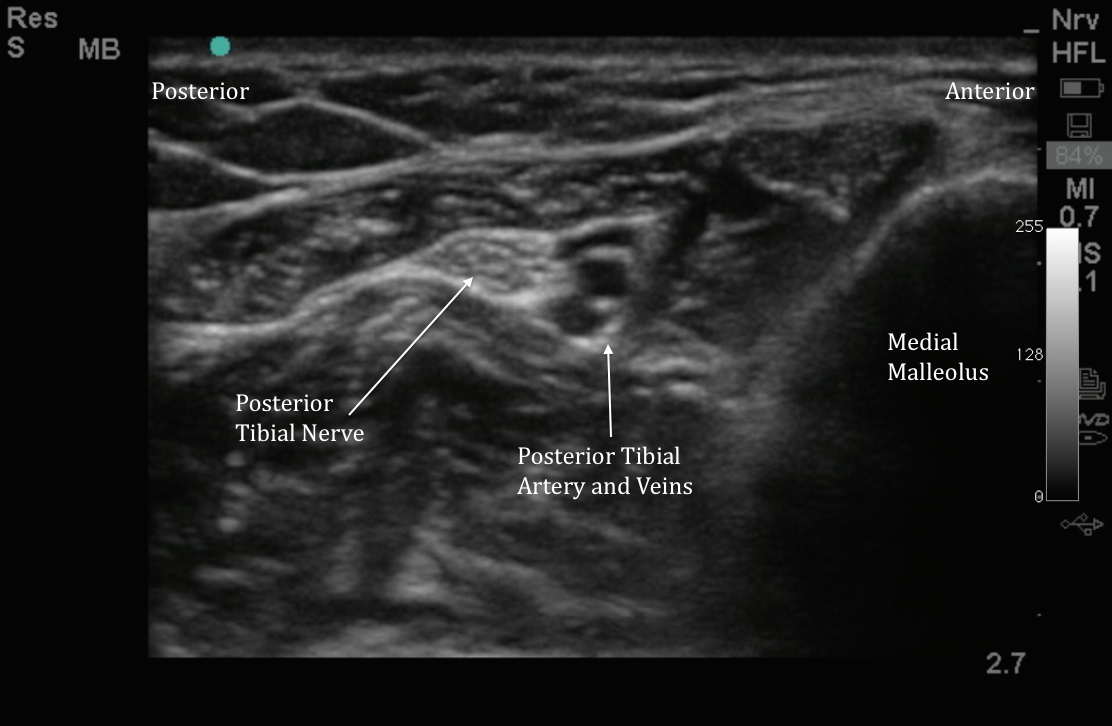The IOW this week comes from Dr. Ezaldeen Numur, who used the ultrasound to localize a piece of glass in the sole of the foot and perform an ultrasound-guided posterior tibial nerve block for regional anesthesia. Injecting local anesthetic directly into the sole of the foot is exquisitely painful given the lack of distensibility of the tissues and high concentration of nerve endings that are present. The posterior tibial nerve provides sensory innervation to the majority of the sole of the foot and can be a valuable tool for laceration repairs and foreign body removal. Ultrasound guidance has been shown to improve success rates for this block. To image the posterior tibial nerve, begin by palpating the PT pulse just posterior to the medial malleolus. Place the high-frequency linear probe just posterior to the medial malleolus as seen in Image 1.
Image 1

The nerve runs in a vascular bundle with the posterior tibial artery and vein and can be identified by its hyperechoic honeycomb appearance in short axis. Sometimes sliding the probe up and down the leg a few centimeters can improve your ability to visualize the nerve. Try not to put too much pressure on the probe as vessels are superficial and may be occluded. Image 2 shows the normal appearance of the nerve in the cross-section.
Image 2

To perform the block, the needle is advanced under the probe using an in-plane technique so the entire shaft of the needle can be visualized as it approaches the nerve. The needle (approx 22g) should typically enter from just anterior to the Achilles tendon. The needle is advanced until it is almost touching the nerve and 3-5cc of anesthetic is injected. If the patient experiences pain the needle should be withdrawn to avoid direct intraneural injection. If the injection is successful you should see hypoechoic fluid surround the nerve circumferentially. This patient had complete anesthesia to the sole of the foot and tolerated removal of the piece of glass without complication.
For further reading see Redborg KE, et al., Ultrasound Improves the Success Rate of a Tibial Nerve Block at the Ankle. Regional Anesthesia and Pain Medicine. 2009 34(3):256-260
Date: September 2014

